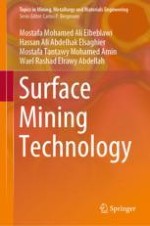This book gives a brief history and a general overview of the state of surface mining technology with topics ranging from the principles to surface mining methods, systems, and pit planning design. It starts with the definition of surface mine and ends with land reclamation and mine closure. The following chapters address the basics of mineral economics, calculation of stripping ratio; exploitation of difficult parts of ore deposits, slope stability, controlling falls and slides in the surface mines, sorts of freight traffic, scrapers, bulldozers, and loaders. The book serves as a reference text for mining students, engineers, and geologists.
